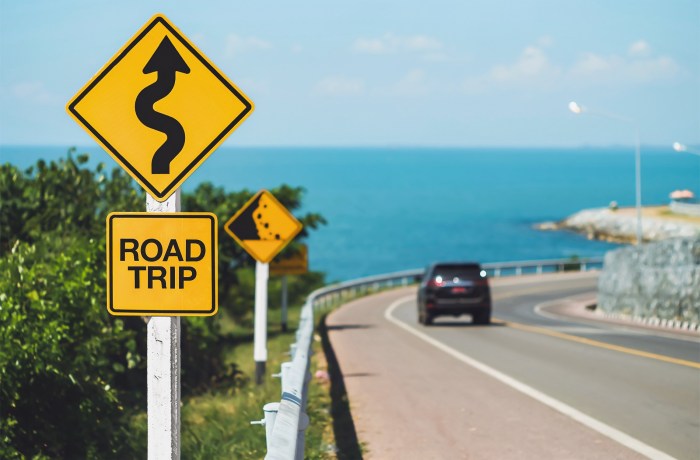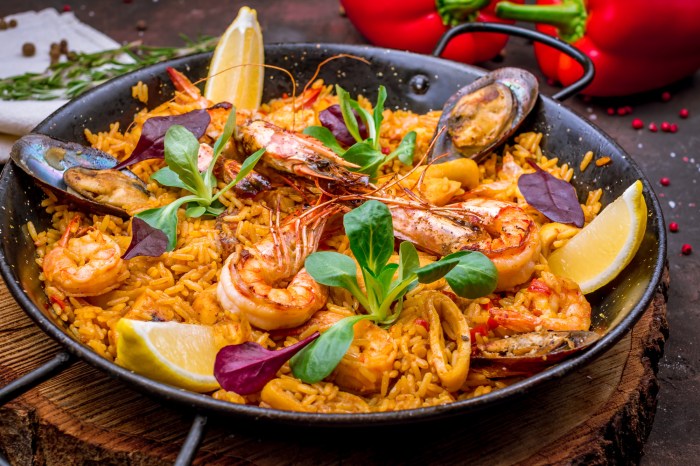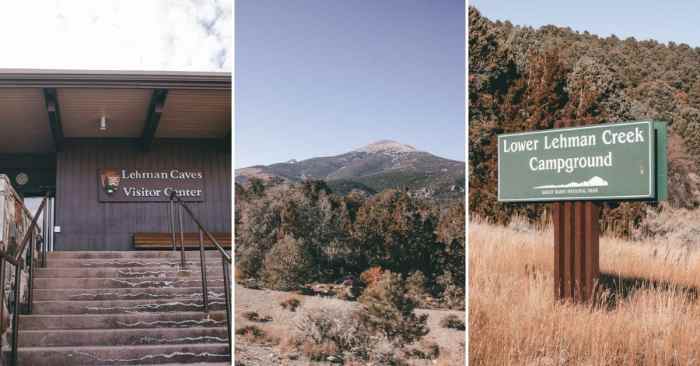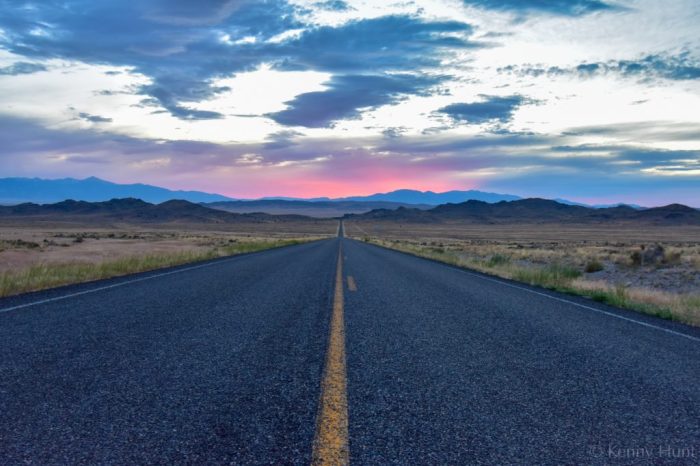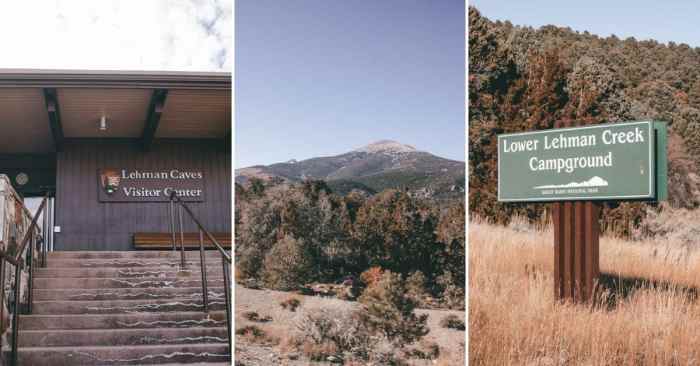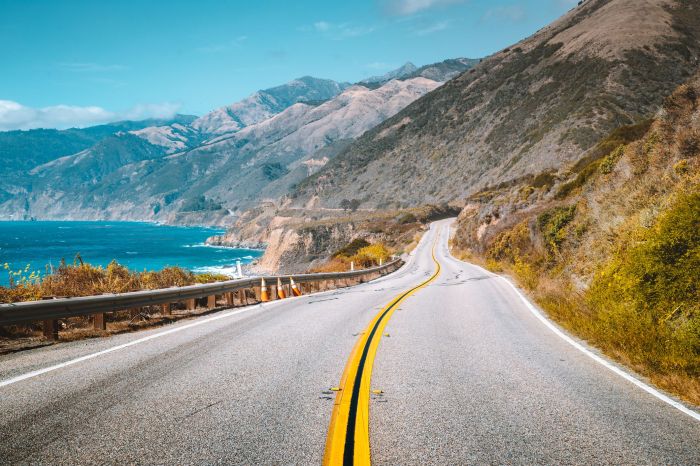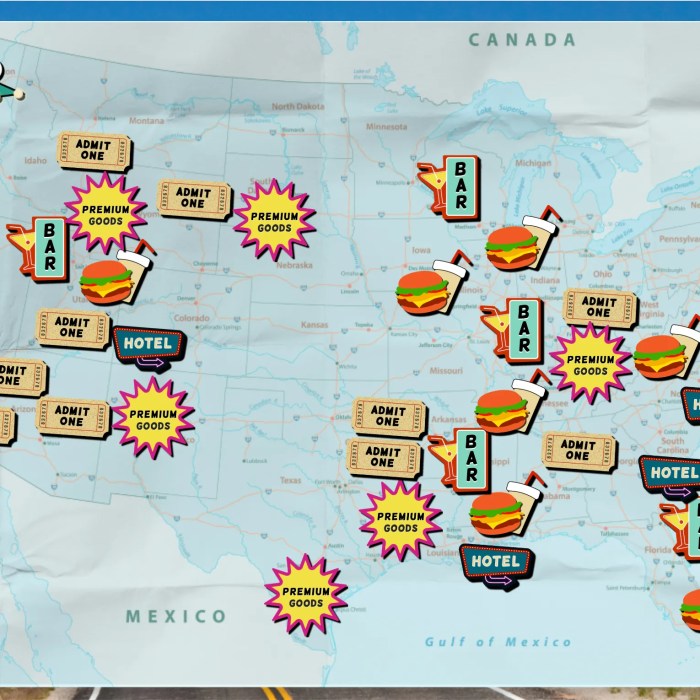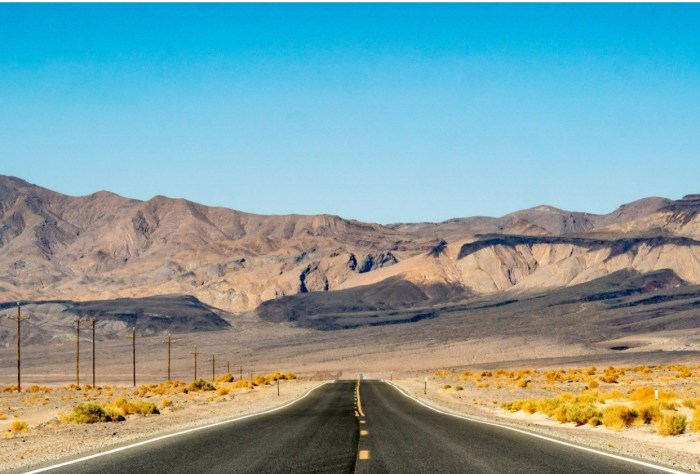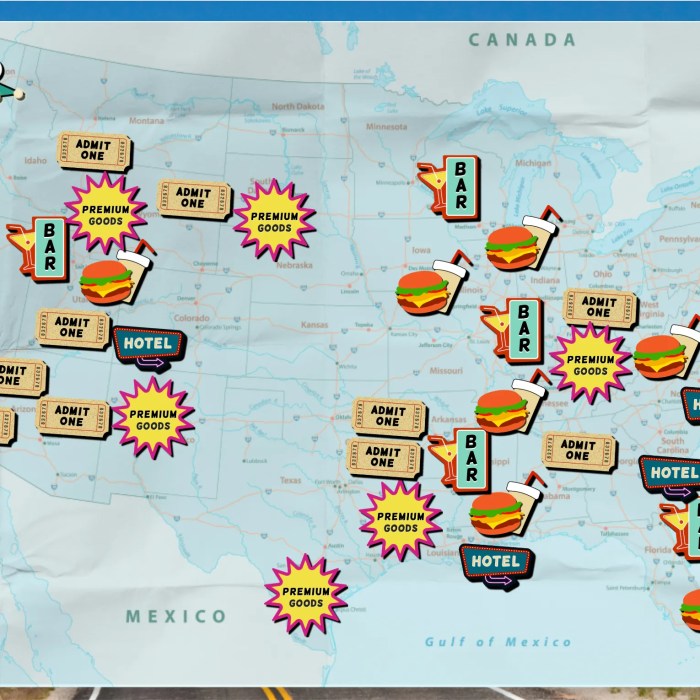Trip ideas black history road trips around the United States opens up a world of fascinating exploration, revealing the rich tapestry of Black history woven into the very fabric of American culture. From the poignant stories of resilience and struggle to the triumphs and celebrations of Black achievement, these journeys offer a profound opportunity to connect with the past and understand the present.
This journey will delve into the planning process, covering destinations, activities, and cultural sensitivity. It’ll detail everything from choosing historical sites and museums to understanding the local culture and respecting the stories embedded within each place. Budgeting and transportation considerations will also be addressed, making the planning process as smooth as possible.
Introduction to Black History Road Trips
Embarking on a Black History road trip is more than just sightseeing; it’s a journey into the rich tapestry of African American history, culture, and resilience. These journeys connect us to the past, illuminating the struggles and triumphs of a people who have shaped the very fabric of American society. From the echoes of the Underground Railroad to the vibrant legacy of the Civil Rights Movement, these trips offer a profound opportunity for personal growth and a deeper understanding of our shared heritage.These journeys are not merely vacations; they are powerful educational experiences that allow us to connect with the historical sites, communities, and individuals who have contributed so much to American history.
They offer a unique perspective, fostering empathy, and celebrating the contributions of Black Americans in all aspects of life. Through exploration and reflection, these trips illuminate the complexities of the past and inspire us to build a more just and equitable future.
Defining a Black History Road Trip
A Black History road trip is a journey focused on exploring locations and sites significant to the African American experience. These trips often trace the footsteps of pivotal figures, commemorate historical events, and celebrate the cultural richness of Black communities. They extend beyond mere sightseeing, offering an immersive understanding of the past and its lasting impact on the present.
The experiences vary greatly, from visiting historic homes and churches to engaging with local communities and museums.
Historical Significance of Black History Road Trips
These trips serve as vital tools for historical preservation and education. By visiting the places where pivotal moments unfolded, we gain a tangible connection to the past, enriching our understanding of the struggles, triumphs, and enduring spirit of Black Americans. This connection allows us to engage with history on a deeply personal level, moving beyond abstract narratives and experiencing the reality of the past firsthand.
Visiting these places also fosters a sense of belonging and appreciation for the diverse contributions of African Americans.
Importance of Preserving and Celebrating Black History Through Travel
Preserving Black history is crucial for understanding the American story in its entirety. By actively seeking out and celebrating these sites, we ensure that the narratives of resilience, innovation, and cultural richness are not lost to time. Black History road trips offer a powerful platform for this celebration. They invite us to engage with history not just as passive observers but as active participants in preserving and promoting understanding.
This engagement helps foster a more inclusive and just society.
Core Values and Purpose of Black History Road Trips
The core values underpinning these trips are rooted in education, reflection, and appreciation. The purpose transcends mere tourism; it’s about fostering a deeper understanding of the past and its influence on the present. These trips aim to promote empathy and understanding by connecting visitors with the experiences of African Americans throughout history. Furthermore, they inspire visitors to actively participate in the ongoing struggle for social justice and equality.
Overview of Key Themes and Areas to be Covered
These trips often revolve around several key themes: the struggle for freedom and civil rights, the contributions of African Americans to the arts and culture, the historical significance of Black communities, and the ongoing fight for social justice. These themes are often intertwined and explored through various regions and locations, such as the South, the North, and the West.
Planning a Black history road trip? Beyond the rich historical sites, consider incorporating some amazing hiking trails for a more well-rounded experience. For inspiration on incredible hiking spots across the country, check out this great resource for trip ideas best hiking trip ideas best hiking. These hikes can offer breathtaking views and unique perspectives, enriching your understanding of the region’s history while providing some much-needed physical activity.
Ultimately, these combined elements can create an unforgettable Black history road trip experience.
These journeys may visit historical landmarks, museums, historical homes, and other locations that offer insights into the Black experience. Examples include the Underground Railroad sites in the South, the Harlem Renaissance locations in the North, and the African American settlements and communities in the West. By exploring these regions, travelers gain a comprehensive understanding of the diverse contributions and experiences of African Americans.
Destinations & Routes
Embarking on a Black history road trip offers a powerful way to connect with the rich tapestry of African American experiences. These journeys aren’t just about visiting historical sites; they’re about understanding the struggles, triumphs, and enduring spirit of a community. Exploring these destinations allows for a deeper appreciation of the nation’s complicated past and the present-day fight for equality.This section details key destinations, significant landmarks, and potential itineraries, providing a framework for planning your own immersive journey.
Key Destinations and Their Significance
Significant cities and locations hold immense historical weight in the African American experience. From the cradle of the Civil Rights Movement to the vibrant artistic centers of the Harlem Renaissance, these destinations offer a wealth of stories waiting to be discovered. Understanding their significance provides a more profound appreciation for the journey.
- Washington D.C.: A cornerstone of the Civil Rights movement, D.C. boasts numerous museums, memorials, and historical sites, including the Martin Luther King, Jr. Memorial, the National Museum of African American History and Culture, and the historic district. These locations provide an overview of the fight for equality and freedom.
- Memphis, Tennessee: Home to the birthplace of rock and roll and the Lorraine Motel, where Dr. Martin Luther King Jr. was assassinated. Memphis’s historical significance extends beyond music, encompassing crucial moments in the Civil Rights struggle.
- Atlanta, Georgia: The heart of the Civil Rights movement, Atlanta houses the Ebenezer Baptist Church, the Martin Luther King, Jr. National Historical Park, and numerous other sites that played a pivotal role in the fight for equality.
- Charleston, South Carolina: This historic city carries a complex legacy, including the sites of slavery and the aftermath of the Civil War. Exploring these locations offers insight into the struggles and resilience of African Americans.
- New Orleans, Louisiana: New Orleans offers a unique blend of culture and history, showcasing the rich African American contributions to music, art, and culinary traditions. The city’s unique historical blend makes it a fascinating destination.
Historical Landmarks, Museums, and Cultural Sites
These locations offer a glimpse into the past and allow visitors to connect with the struggles and triumphs of African Americans.
- Museums: The National Museum of African American History and Culture in Washington D.C. provides a comprehensive overview of the African American experience, from slavery to the present day. Similar museums exist in other cities, offering specialized insights into particular eras or aspects of African American history.
- Memorials: Memorials such as the Martin Luther King, Jr. Memorial in Washington D.C. serve as poignant reminders of the sacrifices made in the fight for equality and justice.
- Cultural Sites: Exploring historical neighborhoods and cultural centers like Harlem provides insight into the artistic and intellectual contributions of African Americans throughout history.
Possible Itineraries
The length of a trip significantly impacts the possible destinations and experiences. Planning itineraries with various durations provides options for different interests.
- Short Weekend Getaways: These trips often focus on a single city or region, allowing for in-depth exploration of specific historical sites and cultural centers. For instance, a weekend in Washington D.C. can focus on the National Museum of African American History and Culture and memorials.
- Multi-Week Journeys: These journeys offer the opportunity to explore multiple states and cities, delving deeper into the multifaceted history of the African American experience. These trips may encompass the entire South, covering sites of the Civil Rights movement.
Potential Destinations and Travel Times
| Destination | Significance | Estimated Travel Time (approx.) from previous destination |
|---|---|---|
| Washington D.C. | National Museum of African American History and Culture | Variable, depending on previous location |
| Memphis, TN | Birthplace of Rock and Roll, Lorraine Motel | 8-12 hours by car |
| Atlanta, GA | Civil Rights Movement heartland | 6-8 hours by car |
| Charleston, SC | Historic city with complex legacy | 8-10 hours by car |
Activities & Experiences
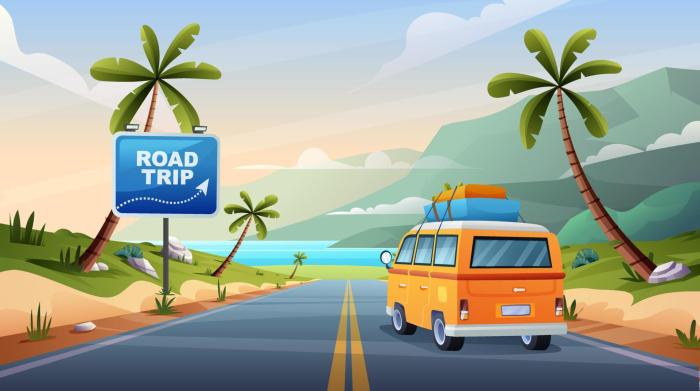
Unveiling the stories of the past is more than just visiting historical sites; it’s about engaging with the culture and understanding the human experience. This journey through Black history involves immersing yourself in the rich tapestry of activities, interactions, and learning opportunities that each location offers. From museums showcasing pivotal moments to local experiences that illuminate everyday life, these experiences will deepen your understanding and appreciation.These experiences are designed to be more than a passive observation; they’re meant to foster active learning and cultural exchange.
By participating in workshops, lectures, and interactions with locals, you’ll gain a profound insight into the lived realities and resilience of Black communities.
Engaging with Local Communities
Local communities hold the key to unlocking unique and authentic experiences beyond typical tourist attractions. Talking to residents, attending community events, or participating in local workshops can reveal hidden stories and perspectives. These opportunities offer a richer understanding of the daily lives and contributions of the community members.
- Engage with local businesses and organizations: Seek out Black-owned restaurants, shops, and community centers. Their experiences are valuable sources of insight, and their support helps sustain the local economy.
- Attend community events: Many towns and cities host festivals, concerts, and gatherings that celebrate local culture. These events offer a vibrant glimpse into the present and a unique chance to meet people and learn more about their perspectives.
- Participate in workshops and lectures: Workshops and lectures led by local experts or community members offer in-depth knowledge and understanding of specific topics or historical events.
Discovering Hidden Gems
Beyond the well-known landmarks, each location holds countless hidden gems waiting to be discovered. These could include lesser-known historical sites, community gardens, or local artists’ studios. Researching these alternative destinations will enrich your trip and provide a more complete picture of the history and culture.
- Explore local libraries and archives: These resources often hold valuable primary source documents, photographs, and stories that are not widely accessible. Libraries and archives can offer a deeper understanding of the community’s history and heritage.
- Visit local art galleries and studios: Artwork provides a visual representation of the culture and experiences of the people. Discovering local art can offer unique insights into the community.
- Connect with local historians and community leaders: Reach out to individuals involved in preserving local history. They can offer personalized insights and guidance.
Museums, Historical Sites, and Cultural Centers
Museums, historical sites, and cultural centers provide structured opportunities for learning about Black history and culture. These institutions often house significant artifacts, exhibits, and resources that offer a deeper understanding of the past.
- National Museum of African American History and Culture (Washington D.C.): A comprehensive collection of artifacts, exhibits, and resources that explore the history of African Americans in the United States.
- The Apollo Theater (New York City): A historic venue that has played a significant role in the development of African American music and performance.
- The Martin Luther King, Jr. National Historical Park (Atlanta, GA): This park preserves the legacy of Dr. King and provides insights into the Civil Rights Movement.
- Local historical societies and museums: These local institutions often focus on the specific history of the community you’re visiting.
Interactive Learning Opportunities
Interactive learning experiences can make your trip more engaging and memorable. These experiences go beyond simply reading or viewing exhibits. Workshops, lectures, and other activities allow for active participation and deeper understanding.
- Attend lectures and presentations by historians, activists, or community leaders.
- Participate in guided tours focused on specific aspects of Black history.
- Engage in hands-on activities, like creating crafts or trying traditional foods, to experience the culture firsthand.
Planning & Preparation
Embarking on a Black History road trip requires careful planning to ensure a meaningful and enriching experience. This journey isn’t just about driving; it’s about immersing yourself in history, culture, and community. Thorough research and preparation are crucial to maximizing your time and minimizing potential issues.A well-structured plan will allow you to fully appreciate the historical sites and cultural experiences you encounter, making the trip memorable and impactful.
It’s not just about ticking off locations; it’s about connecting with the stories and legacies of those who came before.
Research and Planning
Understanding the historical context of the destinations is essential for a meaningful experience. Research specific sites, museums, and cultural centers related to your chosen historical periods and themes. This can include researching lesser-known stories and individuals, going beyond the commonly known historical figures. Exploring primary sources like letters, diaries, and photographs will add depth to your understanding.
Online resources, historical societies, and local guides can offer valuable insights.
Planning a Black History road trip? Beyond the historical sites, you could delve into the fascinating cultural design and architecture of Sarasota. Exploring the mid-century modern architecture there offers a unique perspective, showcasing how design can reflect history. Check out this amazing collection of examples of culture design architecture design sarasota midcentury modern architecture for inspiration as you plan your trip.
It’s a great way to connect with the past while experiencing a vibrant part of the present.
Unique Needs and Requirements
Black History road trips often involve visiting historically significant locations that may have unique accessibility requirements. Consider the specific needs of your travel group, including mobility limitations or dietary restrictions. Pre-booking accommodations and transportation that cater to these needs will ensure a comfortable and enjoyable experience. Also, be mindful of potential cultural sensitivities and etiquette when visiting historical sites and communities.
Resources for Planning and Booking
Numerous resources can assist with planning and booking accommodations, transportation, and tours. Online travel agencies, historical society websites, and local tourism bureaus can provide valuable information about available accommodations and tours. Consider using online forums and social media groups dedicated to Black travel experiences for recommendations and insights. Local Black-owned businesses are often a great source for information and support.
Planning Checklist
A well-organized checklist is critical for a smooth trip.
- Essential Documents: Passport, driver’s license, visas (if necessary), insurance documents, and any necessary travel permits. Verify the validity of these documents well in advance to avoid any issues at the border or during your trip.
- Insurance: Comprehensive travel insurance is highly recommended to cover medical emergencies, trip cancellations, lost baggage, and other unforeseen circumstances. Consider travel insurance that specifically covers historical sites, as some locations may have unique safety requirements.
- Emergency Contacts: Keep a list of emergency contacts, including family members, friends, and local emergency services numbers, readily available. Ensure these contacts have your itinerary and emergency information.
Detailed Itinerary Template
A detailed itinerary is crucial for managing time effectively and ensuring a smooth experience. A template can be used for planning each day, including estimated travel time between locations, planned activities, and time for relaxation. Allocate sufficient time for exploring each site and consider any potential delays.
| Date | Location | Activities | Accommodation | Transportation |
|---|---|---|---|---|
| Day 1 | [City Name] | Visit [Museum Name], explore [Historical District] | [Hotel Name] | [Car/Train/Plane] |
| Day 2 | [City Name] | [Activities] | [Accommodation] | [Transportation] |
Travel Documents and Resources
Gather all necessary travel documents and resources, including:
- Accommodation confirmations: Confirm all reservations in advance to ensure you have a place to stay.
- Transportation details: Check flight schedules, train times, or rental car availability, and ensure the transportation aligns with your itinerary.
- Copies of important documents: Make copies of passports, visas, and insurance documents, keeping them separate from the originals.
- Emergency contact information: Keep a list of emergency contacts, including phone numbers and addresses, easily accessible.
Budgeting & Cost Considerations
Planning a Black History road trip requires careful budgeting, especially considering the duration and destinations. Understanding the potential costs associated with accommodations, transportation, and activities is crucial for a smooth and enjoyable journey. This section will detail how to create a budget for your trip, considering different options and scenarios.
Budgeting Strategies for Different Trip Durations
A key aspect of planning a budget is tailoring it to the length of your road trip. Shorter trips, typically under a week, often allow for more flexibility in terms of spending, but may require more pre-planning for activities. Longer trips, spanning multiple weeks, necessitate a more detailed budget plan to cover expenses like food, entertainment, and potentially additional transportation costs.
Consider factors like the number of people traveling, the desired level of comfort, and the specific activities planned.
Accommodation Options and Costs
Diverse accommodation options exist to suit varying budgets. Budget-friendly choices include hostels, guesthouses, or Airbnb rentals. Mid-range options encompass hotels or motels, while luxury accommodations may include boutique hotels or resorts. Prices fluctuate based on location, demand, and the time of year. For instance, a budget-friendly hostel in a historic city center might cost around $50-$75 per night, while a mid-range hotel could range from $100-$200.
Luxury accommodations, on the other hand, could easily exceed $200 per night.
Transportation Costs and Options
Transportation costs are another significant factor. Renting a car offers flexibility but can be expensive. Carpooling with friends or family can significantly reduce costs. Utilizing public transportation, where available, is often a more affordable option. Consider the distances between destinations and the frequency of public transit routes when choosing this method.
The cost of gas or public transport fares can vary considerably based on the destination and the time of year. For example, a cross-country road trip in a car might require budgeting for gas, tolls, and potential car maintenance. Conversely, relying on public transit could result in lower costs but potentially longer travel times.
Budget-Friendly Meals and Activities
Finding affordable meals is crucial. Restaurants often offer discounted lunch specials or family-style options. Local markets and food trucks provide a more budget-friendly alternative to sit-down restaurants. Similarly, free activities like exploring historical sites, visiting museums with free admission days, or participating in community events can significantly reduce expenses. For instance, checking local listings for free concerts or festivals can offer affordable entertainment options.
Sample Budget Table
| Trip Scenario | Duration (days) | Accommodation (avg. nightly cost) | Transportation | Activities | Food (avg. daily) | Total Estimated Cost |
|---|---|---|---|---|---|---|
| Short Trip (4 days) – 2 people | 4 | $75 | Public transport | Free/Low-cost | $25 | $800 |
| Mid-Range Trip (7 days) – 4 people | 7 | $125 | Car rental | Mix of free & paid | $35 | $1,750 |
| Extended Trip (14 days) – 2 people | 14 | $100 | Carpooling/Public transport | Mostly free/Low-cost | $20 | $2,100 |
Note: This table is a sample and costs may vary based on specific locations and choices.
Accommodation & Transportation: Trip Ideas Black History Road Trips Around The
Planning your Black History Road Trip involves careful consideration of both lodging and travel. Finding affordable yet comfortable accommodations and efficient transportation is crucial to making the most of your journey. This section details the options available, helping you choose the best fit for your budget and the unique experiences you seek.Choosing accommodations and transportation methods that align with the values of the trip, such as supporting local businesses and minimizing environmental impact, are equally important considerations.
This involves researching and selecting options that reflect your personal values and contribute to a more sustainable and enriching experience.
Accommodation Options
A diverse range of accommodations caters to various budgets. From budget-friendly hostels and guesthouses to charming bed and breakfasts and luxurious hotels, options abound. Consider factors like location, proximity to historical sites, and amenities when making your selection. Booking in advance, especially during peak season, is highly recommended to secure your preferred accommodation.
- Hostels: Often the most budget-friendly option, hostels offer shared rooms and communal spaces. They are a great choice for solo travelers or groups seeking a social atmosphere.
- B&Bs: These charming establishments offer a more personalized experience. They are usually situated in historic neighborhoods and provide a taste of local culture.
- Hotels: Hotels provide a wide range of amenities and services, from basic rooms to luxurious suites. Their location and proximity to attractions are usually excellent.
- Airbnb: Offers a diverse selection of unique and often affordable accommodations, ranging from apartments to entire houses. This option can be a great way to experience local life.
- Local Communities: Consider staying in the homes of local individuals or communities. This allows you to immerse yourself in the culture, build relationships, and often find a more affordable and authentic experience. For example, you can find homes available through local tourism boards or community-based organizations.
Transportation Methods, Trip ideas black history road trips around the
Choosing the right transportation method depends on the distances between destinations and your personal preferences. Renting a car offers flexibility but can be more expensive and time-consuming, especially if navigating unfamiliar routes. Utilizing public transportation or ride-sharing services can be a more affordable and efficient option, especially for trips focused on city centers.
- Rental Cars: Offer the greatest flexibility to explore at your own pace, especially if the route is extensive and covers a variety of locations. However, consider factors such as parking availability, driving conditions, and potential fuel costs.
- Public Transportation: Buses, trains, and subways are usually a cost-effective way to navigate within and between cities. Research the availability and schedules of public transportation for each location.
- Ride-Sharing Services: Services like Uber and Lyft offer a convenient and often affordable way to travel between locations. They are useful for shorter distances and can provide a more flexible approach to getting around.
- Flights: Flights can be necessary for long-distance travel between significant destinations. Research the most economical airlines and compare flight times and prices.
- Trains: For specific destinations, trains can offer scenic routes and comfortable travel, and can often be more efficient than driving long distances.
Booking Strategies
Efficient booking strategies can significantly impact your trip. Booking accommodations and transportation in advance, especially during peak seasons, ensures availability and often results in better prices. Utilize online travel agencies and platforms to compare prices and find the best deals. Websites such as Booking.com, Expedia, and Kayak can help with this.
- Booking in Advance: Booking accommodations and transportation well in advance is crucial, especially during peak season, to ensure availability and secure better deals. This is especially true for popular destinations.
- Comparison Websites: Utilize online travel agencies and platforms to compare prices and availability of various accommodations and transportation options. Sites like Booking.com, Expedia, and Kayak provide valuable tools for this.
- Local Resources: Contact local tourism boards, historical societies, or community organizations for insights and recommendations. They may have special offers or insights that can enhance your trip.
- Flexibility: Be prepared to adjust your plans based on real-time pricing and availability. Being flexible with dates and destinations can lead to cost savings.
Cultural Sensitivity & Respect
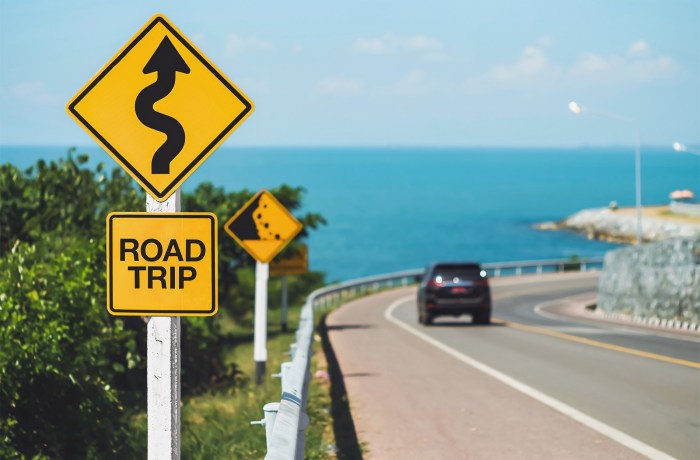
Embarking on a Black History road trip is more than just sightseeing; it’s a journey into the rich tapestry of African American history and culture. To truly appreciate the experience and honor the communities you visit, genuine cultural sensitivity and respect are paramount. This involves more than just politeness; it requires a conscious effort to understand and learn from the historical context, local customs, and the people you encounter.Understanding the historical context of each location is crucial to appreciating the present.
Ignoring the struggles and triumphs of the past can diminish the significance of the places you visit. Learning about the historical injustices, resilience, and contributions of African Americans at each destination enriches the experience and fosters a deeper understanding. It’s about more than just memorizing dates; it’s about comprehending the impact of these events on the communities today.
Planning a Black History road trip? Beyond the usual destinations, exploring lesser-known places like Sapporo, Japan, can offer unique insights. While there, be sure to check out the amazing miso ramen scene at sapporo japan miso ramen alley. The rich flavors and diverse history will enrich your trip and inspire further exploration of important historical figures and events.
These types of journeys provide a unique way to learn about different cultures and histories while experiencing delicious food and exciting new adventures.
Importance of Learning about Historical Context
The historical context of a location provides critical insights into the present. For example, understanding the Jim Crow laws and their lasting impact on communities in the American South, or the role of African Americans in the Civil Rights Movement in the North, shapes how you interpret the current realities and challenges faced by these areas. Learning about the significant individuals and groups that shaped the narrative of Black history at each location deepens your appreciation for the stories and the people.
Engaging with Local Communities Respectfully
Respectful engagement with local communities involves active listening and a genuine desire to understand their perspectives. Asking questions, actively listening to the answers, and demonstrating genuine interest fosters a sense of connection and understanding. Avoid making assumptions or imposing your own interpretations on the experiences of the community. Instead, seek to learn from and alongside them.
Respectful Behaviours and Etiquette Guidelines
Demonstrating respect for local customs and traditions is crucial. This includes understanding appropriate attire, language, and social norms. Researching local customs and traditions before your trip can be invaluable. Be mindful of potentially sensitive topics and avoid making generalizations or assumptions. Engage with locals with empathy and consideration, respecting their beliefs and perspectives.
- Dress respectfully: Appropriate attire varies by location and circumstance. Researching local customs is vital to ensure your clothing aligns with community norms. For example, when visiting a church or religious institution, modest dress is generally expected.
- Listen attentively: When engaging in conversations, actively listen to the perspectives of local individuals and refrain from interrupting. Ask clarifying questions if necessary to ensure you understand their responses.
- Use respectful language: Avoid slang, jargon, or language that may be offensive or inappropriate. Use inclusive language that avoids stereotypes or generalizations.
- Be mindful of personal space: Respect personal space boundaries and customs. Some cultures have different norms regarding personal distance during conversations.
- Avoid taking photographs without permission: In some communities, taking photos of individuals without their explicit consent can be considered disrespectful. Always ask for permission before taking any photographs.
Supporting Local Businesses and Entrepreneurs
Patronizing local businesses and entrepreneurs directly supports the community and its economy. This not only provides financial support but also shows your appreciation for the community’s culture and contributions. Shopping at local stores, restaurants, and other businesses helps stimulate local economies and creates opportunities for individuals and families. Look for locally-owned businesses and restaurants that reflect the region’s unique culinary heritage.
Illustrative Examples
Embarking on a Black History road trip isn’t just about visiting historical sites; it’s about immersing yourself in the stories, the struggles, and the triumphs of generations past. These journeys can be deeply enriching, fostering a profound understanding of Black heritage and resilience. Successful trips often involve meticulous planning, a thirst for knowledge, and a willingness to connect with the community.These examples showcase the diverse experiences possible, highlighting the importance of cultural sensitivity and respectful engagement with local communities.
They illustrate the transformative power of travel when coupled with a commitment to learning and understanding.
Successful Black History Road Trips
Many individuals and groups have undertaken successful Black History road trips, creating lasting memories and fostering a deeper appreciation for Black history. These trips often involve a blend of historical landmarks, cultural events, and community interactions. The key to success lies in careful preparation and a genuine desire to learn.
- A group of college students, passionate about African American literature, traced the footsteps of influential authors. They visited the homes and libraries where these authors wrote, attended literary events, and engaged with local scholars. This journey deepened their understanding of the social and political contexts that shaped these literary giants’ lives, sparking a renewed interest in African American literature within the group.
- A family embarked on a road trip across the Deep South, focusing on the legacy of the Civil Rights Movement. They visited key sites like the Lorraine Motel in Memphis, the 16th Street Baptist Church in Birmingham, and the National Civil Rights Museum. Their journey involved interacting with local historians and community members, providing a firsthand perspective on the struggle for equality.
This experience fostered a profound sense of shared history and responsibility within the family.
- A young historian, driven by a personal connection to her ancestral roots, explored the history of the African diaspora in the Caribbean. She visited historical sites, museums, and cultural centers, documenting her experiences through photographs and journaling. Her journey unearthed untold stories of resilience and cultural exchange, solidifying her understanding of her family’s heritage and inspiring her future research.
Impact and Outcomes
These journeys often lead to significant personal and collective transformations. The experiences allow individuals to connect with their heritage in meaningful ways, fostering a sense of pride and belonging. They also often inspire a commitment to social justice and advocacy, leading to tangible actions to support Black communities.
- Increased awareness and understanding of Black history and culture within participants.
- Development of critical thinking skills regarding historical events and social inequalities.
- Fostering a deeper sense of personal identity and connection to ancestors.
- Inspiring a commitment to social justice and advocacy within the communities visited and beyond.
Comparing Different Road Trip Experiences
This table illustrates the varying approaches to Black History road trips, highlighting the diversity of experiences possible.
| Category | Focus | Activities | Outcomes |
|---|---|---|---|
| Literary Pilgrimage | Tracing the footsteps of Black writers and poets | Visiting historical homes, attending literary events, engaging with local scholars | Increased appreciation for African American literature and its context, inspiring future research |
| Civil Rights Movement Journey | Exploring the legacy of the Civil Rights Movement | Visiting key sites, interacting with local historians, engaging with community members | Deepened understanding of the struggle for equality, fostering a sense of shared history and responsibility |
| Diaspora Exploration | Uncovering the history of the African diaspora | Visiting historical sites, museums, and cultural centers, documenting experiences | Solid understanding of family heritage, inspiring future research, and fostering a sense of belonging to a wider community |
Last Point
Embarking on a Black History road trip isn’t just about sightseeing; it’s about learning, reflecting, and connecting with a powerful legacy. By understanding the history and culture of these pivotal locations, we gain a deeper appreciation for the richness and resilience of Black communities throughout the nation. This journey encourages a deeper understanding and fosters a sense of shared heritage, inspiring future exploration and appreciation for Black history.
